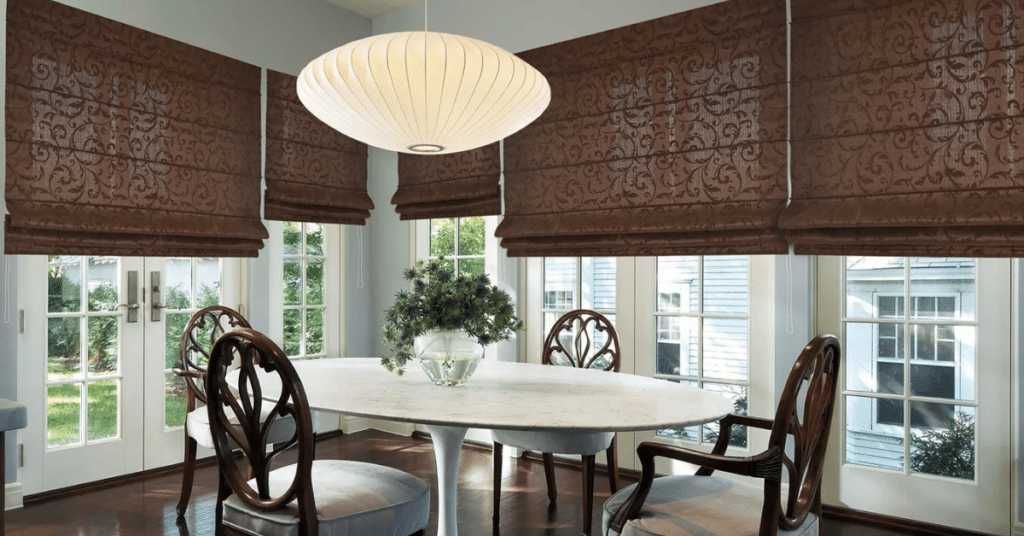Wondering about valance widths? Let’s dive in. Valances add flair to windows. But how wide should they be? It’s crucial to get it right. Measure your window first. Then, consider the style you want. We’ll explore ideal widths. Ready to find the perfect fit? Let’s get started!
Over View the Valance Widths
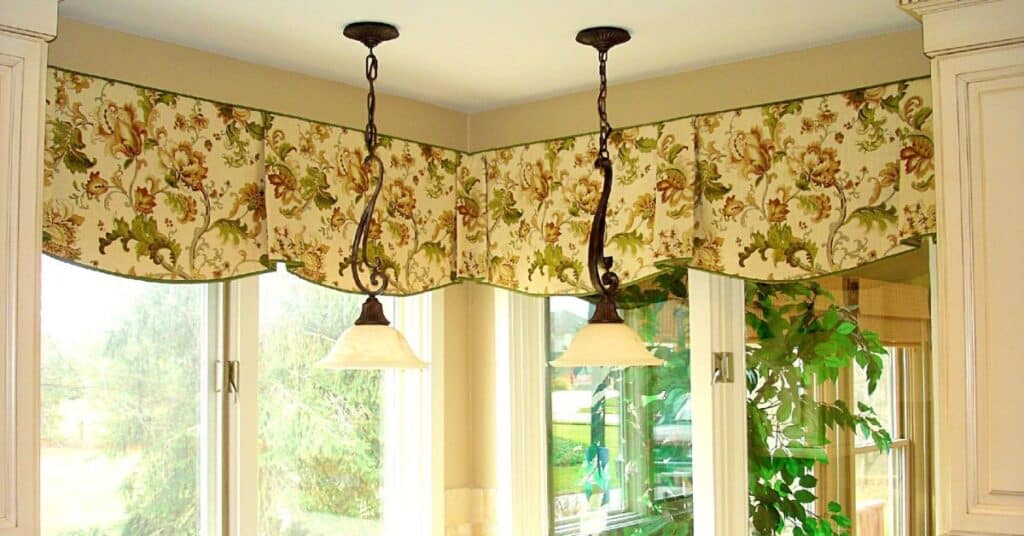
When choosing a valance, always measure your window first. This ensures the perfect fit for your space. Valances come in various widths to suit different window sizes. For a standalone valance or one over a Roman shade, aim for 1-1/2 to 5 inches wider than the window.
If you’re pairing the valance with custom drapes, consider a wider width. Valances for this setup should be 10 to 30 inches wider than the window. This creates a balanced and visually appealing look. If your valance is gathered, its total flat width should be 2 to 3.5 times the width of the window.
If You’ll Install the Valance By Itself
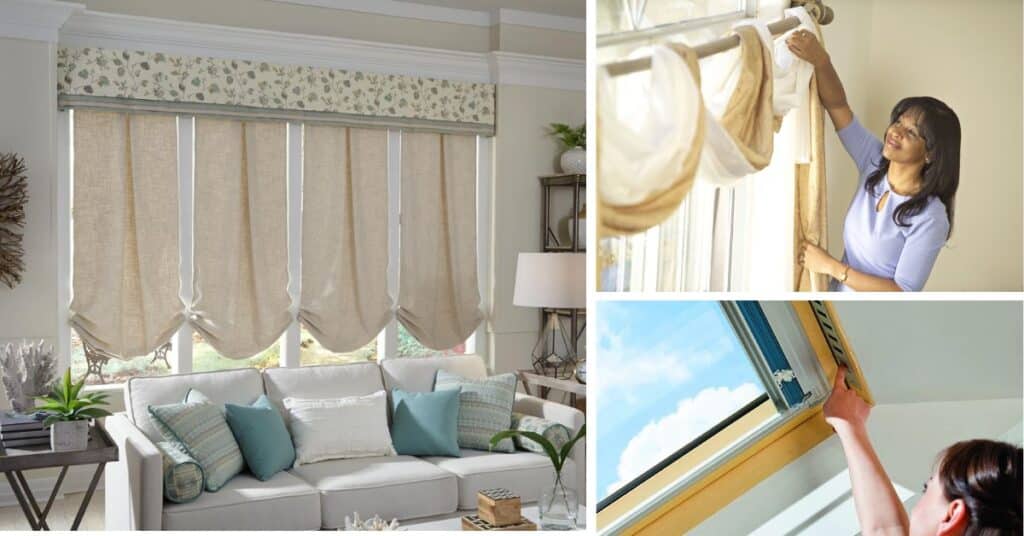
When installing a valance alone, prioritize a snug fit. Ensure the valance hugs the sides of the window closely. Opt for a conservative width to maintain a polished look. Installing the valance higher can create the illusion of height in the room.
Focus on achieving a balanced and proportional appearance. Aim for a clean and tailored finish around the window. Keep the width of the valance conservative to avoid overwhelming the window.
The Simple Valance

When opting for a simple valance with modern lines, keep the width minimal, adding only 1 to 3 inches to the window’s dimensions. Ensure to include the wooden frame in your measurements for accuracy. These valances delicately frame the window, maintaining a sleek and polished appearance.
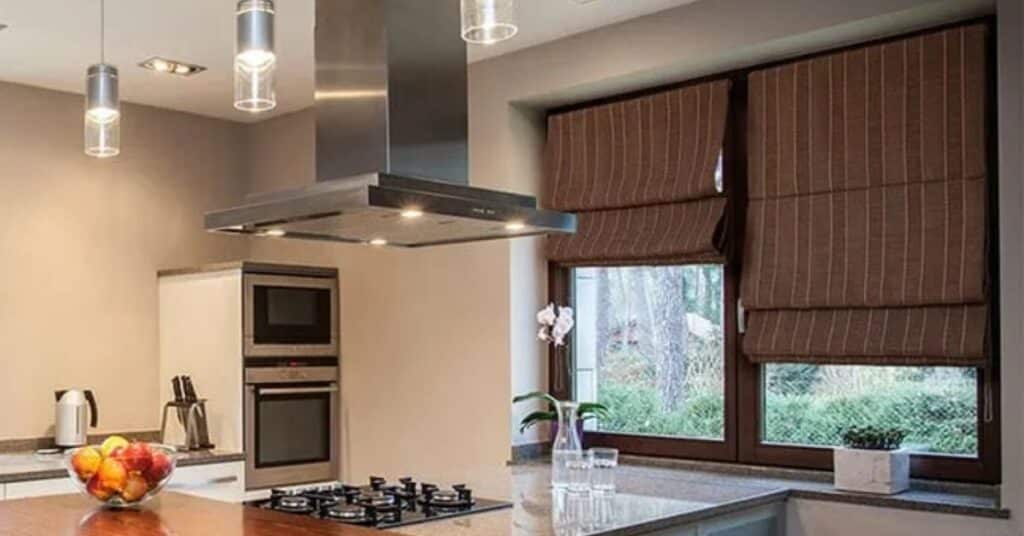
In modern and transitional rooms, a tight fit is essential for a cohesive look. These valances provide just enough coverage to enhance the window’s aesthetic without overpowering it. With a snug fit, they create a seamless transition between the window and the room’s decor, adding a touch of sophistication to any space.
The Simple Valance That Flares Out

Valances with flared bottoms often feature small bells or trumpets on the sides. They add elegance to the design. These valances create a visually interesting look when paired with tailored curtains. If you stand beside them, you may notice the window frame is visible from that angle.
However, this is intentional and perfectly normal. The flare at the bottom allows the valance to gracefully drape over the window, enhancing its appearance.
The Elaborate Valance

Elaborate valances boast intricate designs and detailed craftsmanship. They are heavier and more ornate than simpler styles. These valances often feature luxurious fabrics and decorative elements like tassels or fringe.
Elaborate valances require slightly wider measurements to accommodate their weight and design. They add opulence and sophistication to any window treatment.
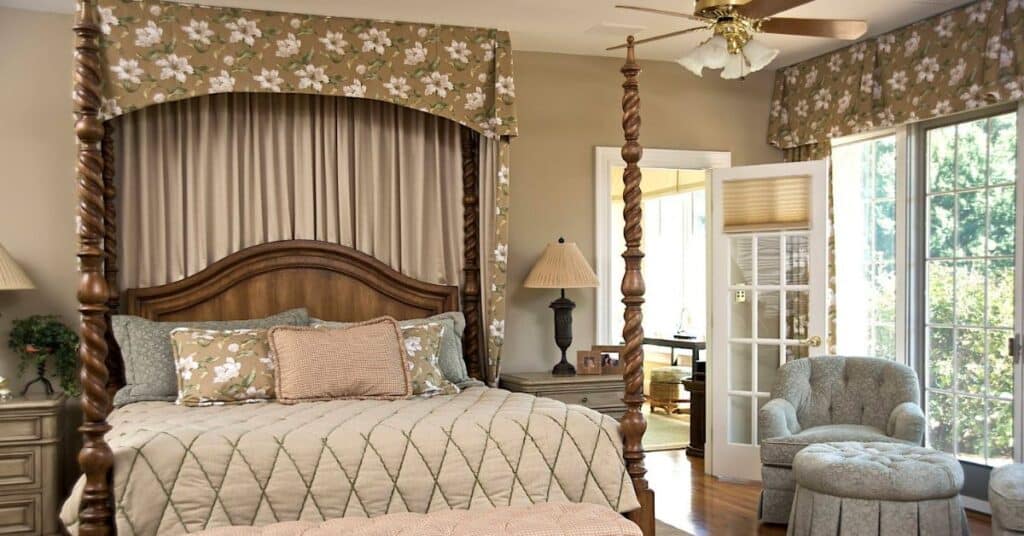
When properly fitted, they frame the window beautifully without overwhelming it. In rooms with elaborate decor, these valances serve as focal points, elevating the overall ambiance.
Read This Blog: ARE PLEATED CURTAINS IN STYLE
Reasons for Extra Width in Elaborate Valances

Extra width in elaborate valances serves multiple purposes, ensuring they complement the window and surrounding decor seamlessly. Understanding the reasons behind this additional width is crucial for achieving an aesthetically pleasing result.
Weight Considerations
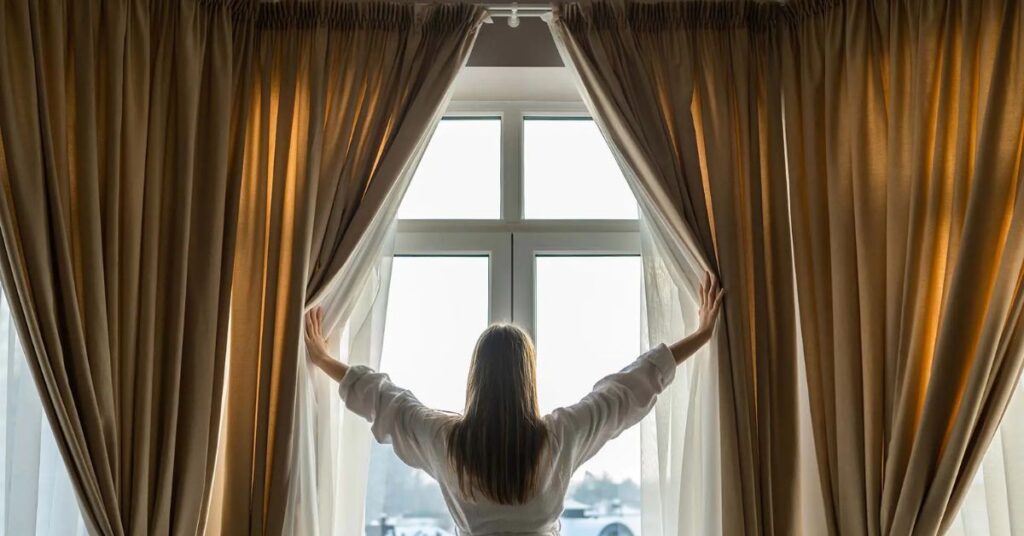
Elaborate valances often feature dense fabrics and intricate designs, resulting in considerable weight. To ensure proper support and prevent the window from being overwhelmed, a slightly wider width is necessary.
Wide Jabots

The long, cascading pieces known as jabots add visual interest to elaborate valances. These components can be quite wide, requiring additional space on the window to maintain a balanced and proportionate appearance.
Framing vs Covering
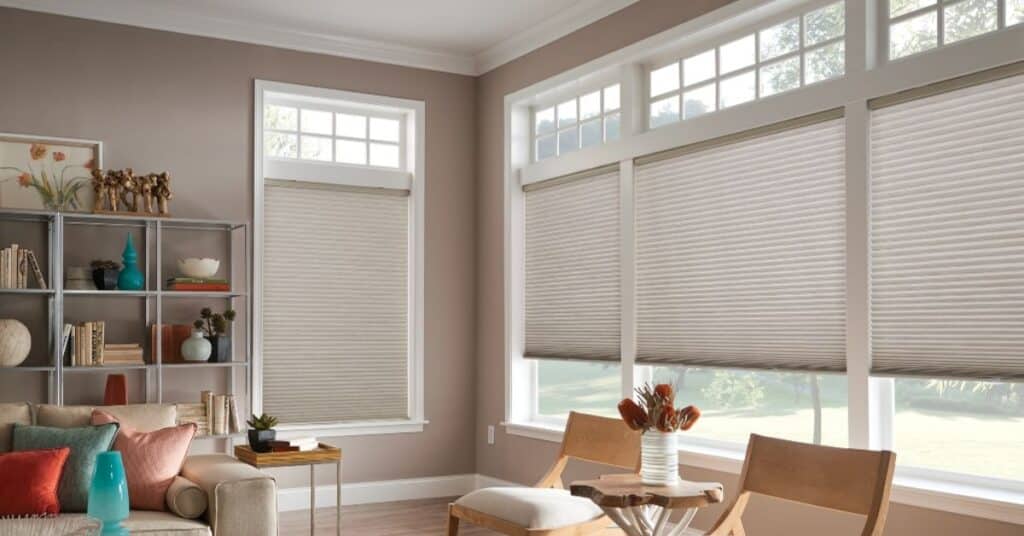
With elaborate valances, it’s essential to strike the right balance between framing the window and covering it. A snug fit may cause the valance to obscure the window, while extra width ensures that the window is elegantly framed by the valance’s design.
The Valance That Gets More Narrow At the Bottom

Valances that taper at the bottom offer a unique aesthetic. They gradually decrease in width, creating an elegant silhouette. This design is often seen in London, balloons or relaxed Roman valances.
The narrowing at the bottom adds visual interest and depth to the window treatment. It also allows for better fabric draping and movement.
With this style, the valance’s weight is distributed evenly, preventing it from appearing bulky. This subtle tapering creates a tailored and sophisticated look. It’s perfect for adding a touch of refinement to any room’s décor.
The Cornice-Style Valance
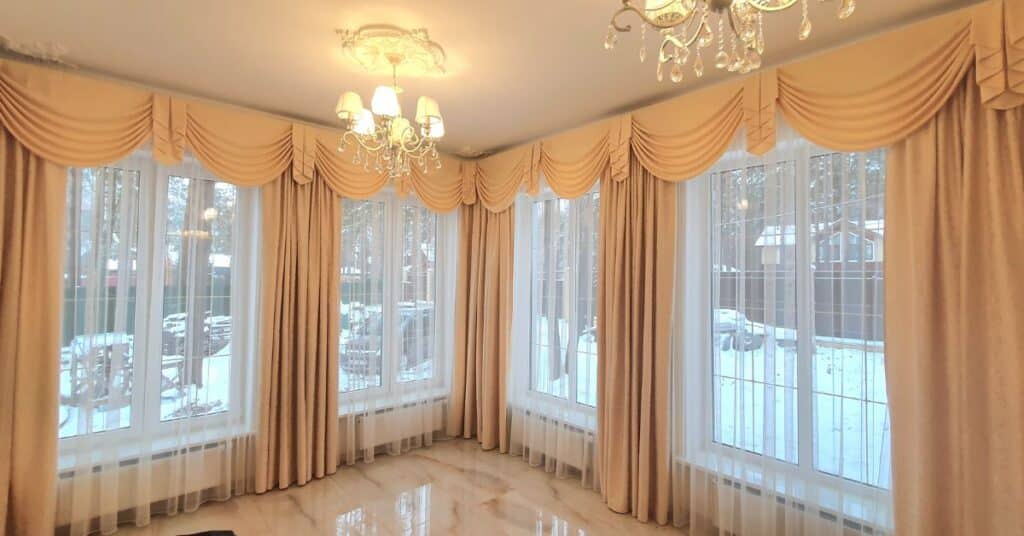
Cornice-style valances offer a distinctive and structured appearance. They feature a box-like shape that extends along the top of the window. This design creates a polished and tailored look. Cornice valances can be either board-mounted or hung on a continental rod.
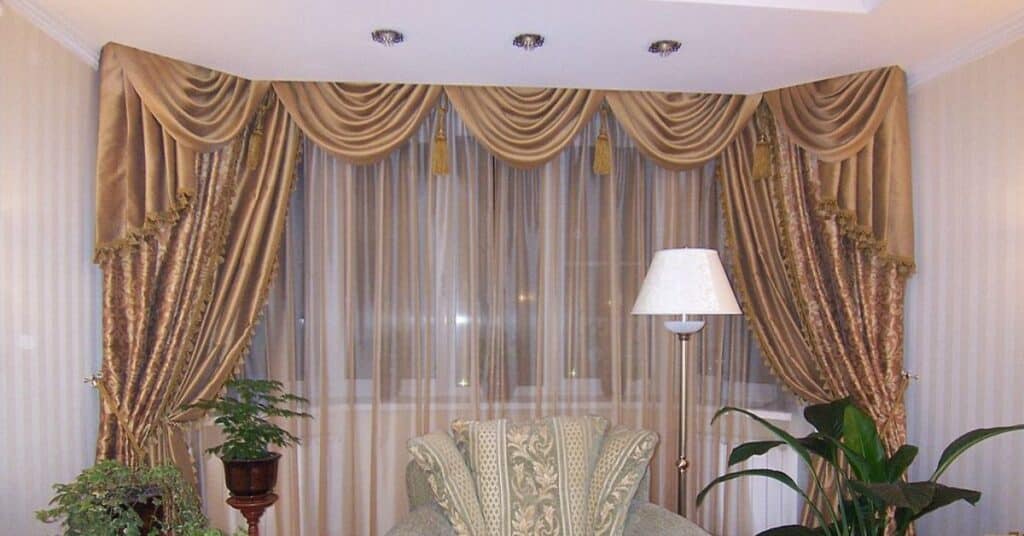
They provide a clean and finished appearance when viewed from the side. With their box-style construction, these valances add architectural interest to windows.
They are versatile and can complement various decor styles. Cornice-style valances are an excellent choice for achieving a refined and elegant window treatment.
The Gathered Valance
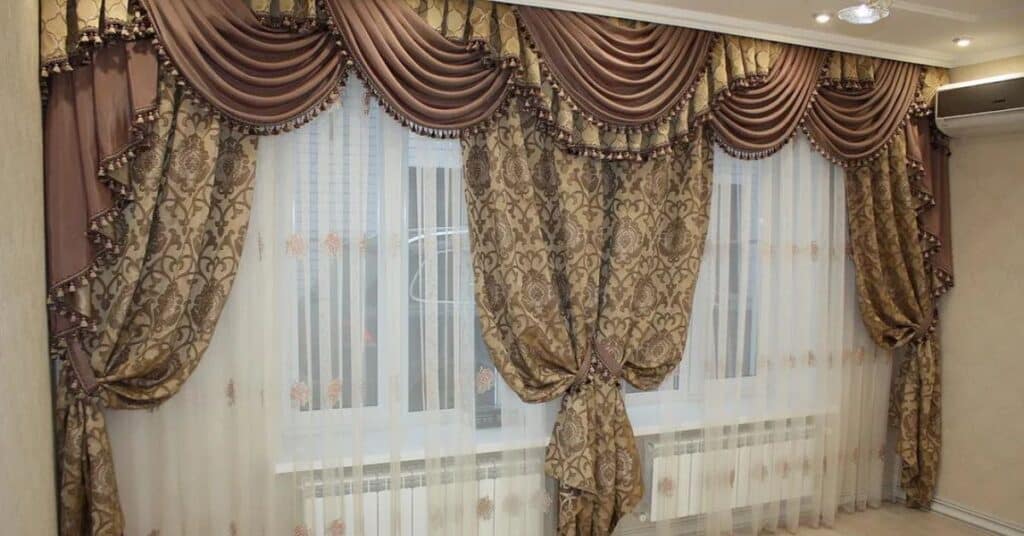
Gathered valances offer a luxurious and elegant addition to window treatments with their pleated or gathered fabric design. Understanding their unique characteristics and considerations is essential for achieving a beautifully draped and visually appealing window ensemble.
Understanding Gathered Valances
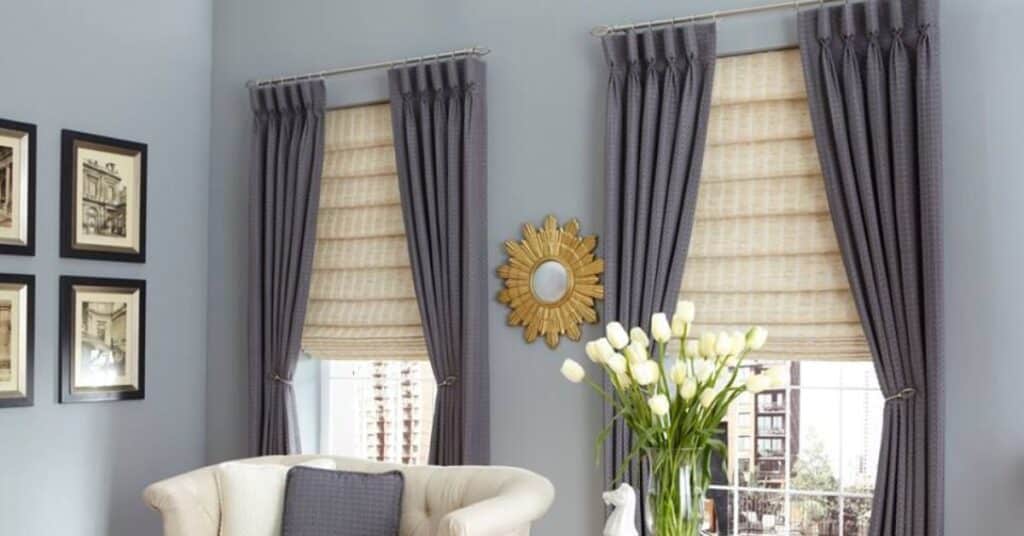
Gathered valances add depth and elegance to window treatments with their fabric gathered or pleated along the top. Unlike flat valances, they create a voluminous look that enhances the room’s ambiance.
Determining the Right Width

When it comes to gathered valances, determining the proper width can be challenging. Generally, the valance should be 2 to 3-1/2 times the width of the window you’re covering. For instance, a 50-inch wide window would require a valance approximately 100 to 150 inches wide when laid flat.
Considerations for Fabric Type

The width of the gathered valance also depends on the fabric used. If the valance is unlined or made of thin, flimsy fabric, you may need to multiply the width by as much as 3.5x to ensure proper fit and coverage. Always consider the fabric’s weight and thickness when determining the valance’s width.
If You’ll Install the Valance Over Draperies
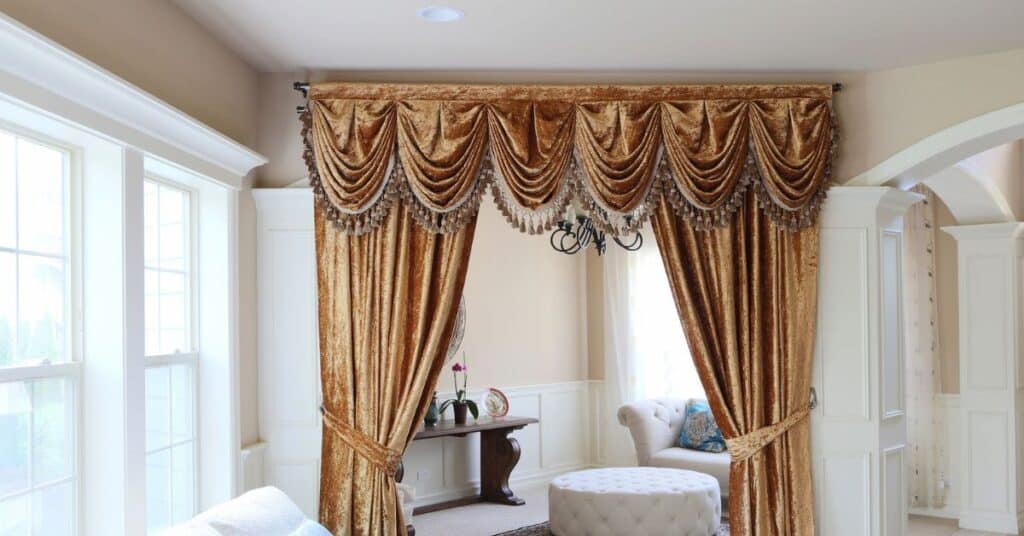
When considering layering valances over draperies, the ideal width of the valance depends on various factors. Specifically, if heavy draperies are involved, it’s recommended to have the valance extend 10 to 30 inches beyond the window’s width. In certain scenarios, exceeding 30 inches can be advantageous, especially for achieving a seamless look across multiple windows.
For example, in instances where the window is only 40 inches wide, the combined width of the valances and draperies can extend to 60 inches or more. This ensures ample coverage and creates a visually appealing effect.
The draperies themselves play a crucial role in determining the overall width. For instance, if each drapery is double the window’s width, the total span for the pair can reach approximately 200 inches. Alternatively, opting for draperies that are one and a half times the window’s width can effectively enhance the perception of window size and invite more natural light into the room.
Measurement Fails

Measurement errors can lead to window treatment mishaps that disrupt the overall aesthetic and functionality of a room. Accurate measurements are crucial to ensure the perfect fit and proportion of valances and draperies.
Without precise measurements, valances may appear too narrow, leaving gaps on the sides of the window, or excessively wide, overwhelming the window frame. One common measurement fail is underestimating the width needed for valances and draperies, resulting in inadequate coverage and a disjointed look.
Conversely, overestimating the width can lead to unnecessary fabric wastage and a cluttered appearance. It’s essential to measure not just the window’s width but also its height and depth to achieve a balanced and harmonious window treatment ensemble.
Final Thought’s
Choosing the right valance width is essential for a polished window treatment. Take into account factors like window size, fabric weight, and design style to determine the ideal width. Whether opting for a simple or elaborate valance, ensure it complements the room’s decor and enhances its overall ambiance. Remember, proper measurement and consideration of these factors will result in a stunning window treatment that elevates your space.
Frequently Asked Question
How long should a valance be for a 36 inch window?
For a 36-inch window, a valance typically ranges from 40 to 44 inches in width.
What size valance for 72 inch window?
A 72-inch window would require a valance measuring approximately 82 to 86 inches in width.
What is the shortest valance length?
The shortest valance length varies but is often around 12 inches, providing minimal coverage.
What size valance for 40-inch window?
A 40-inch window typically requires a valance width of 44 to 48 inches for a balanced look.
How to measure for a valance?
To measure for a valance, determine the width of the window and add a few inches for overhang on each side.

